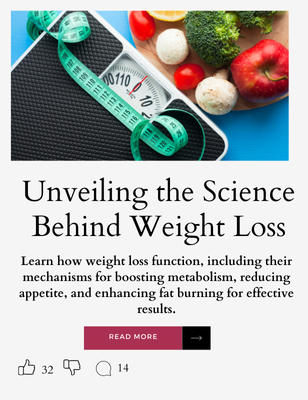Professional dental cleanings play a crucial role in maintaining good oral health. These regular visits to the dentist help prevent tooth decay, gum disease, and other dental problems.
During a professional dental cleaning, a dental hygienist removes plaque and tartar buildup, polishes teeth, and provides advice on proper oral care techniques.
A typical cleaning appointment starts with a quick exam of your mouth. The hygienist checks for any obvious issues before beginning the cleaning process.
They use special tools to scrape away plaque and tartar from your teeth and along the gum line. This step is important because these substances can lead to cavities and gum inflammation if left unchecked.
After removing buildup, the hygienist polishes your teeth to make them smooth and shiny. They may also apply a fluoride treatment to help protect against future decay.
Throughout the appointment, you’ll receive tips on how to improve your oral hygiene routine at home. Regular professional cleanings, combined with good daily habits, help keep your smile healthy and bright.
Key Takeaways
- Professional cleanings remove harmful plaque and tartar to prevent dental problems
- Dental hygienists polish teeth and may apply fluoride for added protection
- Regular cleanings and proper home care work together to maintain oral health
Understanding Professional Dental Cleanings
Professional dental cleanings are an essential part of maintaining oral health. These cleanings remove plaque and tartar buildup that regular brushing and flossing can’t eliminate.
The Role of Dental Professionals
Dental hygienists play a key role in professional cleanings. They use specialized tools to clean teeth thoroughly.
Hygienists remove plaque and tartar from tooth surfaces and below the gum line.
Dentists oversee the cleaning process. They check for signs of dental issues like cavities or gum disease. Dentists may also perform additional treatments if needed.
Together, hygienists and dentists ensure a complete cleaning. They work to prevent future dental problems and maintain oral health.
Types of Dental Cleanings
Regular dental cleanings are the most common type. These remove plaque and tartar buildup from teeth and gums. They typically occur every 6 months.
Deep cleanings may be needed for patients with gum disease. These cleanings go below the gum line to remove buildup.
Some dentists offer special cleanings for children. These might include fluoride treatments or dental sealants to prevent cavities.
Professional teeth whitening is another type of cleaning. It removes stains and brightens teeth beyond what regular cleanings can do.
The Initial Examination
The initial examination is a crucial first step in your dental cleaning. Your dentist will check your mouth for any issues and may take x-rays to get a complete picture of your oral health.
Assessing Oral Health
During this part, the dentist or hygienist will look closely at your teeth, gums, and mouth. They use a small mirror to see all areas clearly.
They check for signs of tooth decay and gum disease.
The exam also includes:
- Checking how your teeth fit together when you bite
- Looking for loose or broken teeth
- Examining your tongue and soft tissues
- Feeling your jaw and neck for any lumps
This careful check helps find problems early. Early detection often means easier and less costly treatment.
X-Rays and Visual Inspection
X-rays are an important tool for dentists. They show parts of teeth and bones that can’t be seen during a regular exam.
Dental x-rays can spot:
- Cavities between teeth
- Problems below the gum line
- Bone loss from gum disease
- Tumors or cysts
Not everyone needs x-rays at every visit. The dentist decides based on your oral health history and current symptoms.
The visual inspection is just as important. The dentist looks for:
- Changes in tooth color
- Swelling or redness in gums
- Visible tartar buildup
Together, x-rays and visual checks give a full picture of your oral health. This helps the dentist plan the best cleaning and treatment for you.
Plaque and Tartar Removal
Removing plaque and tartar is a key part of dental cleaning. This process uses special tools to clear away buildup from teeth.
Scaling Process
Dental hygienists use tools called scalers to remove plaque and tartar. Hand scalers are metal tools with a curved end. The hygienist scrapes them along teeth to lift off tartar.
Ultrasonic scalers are another option. These tools use vibrations to break up tartar. They also spray water to wash away debris.
For heavy buildup, the hygienist may need to use both types of scalers. They work carefully around the gum line and between teeth.
The Importance of Removing Tartar
Tartar forms when plaque hardens on teeth. Unlike plaque, tartar can’t be removed by brushing at home. It needs professional cleaning.
Tartar buildup can lead to:
- Tooth decay
- Gum disease
- Bad breath
- Discolored teeth
Regular removal of tartar helps prevent these issues. It also makes it easier to keep teeth clean at home.
Dental cleanings typically happen every 6 months. This schedule helps control tartar buildup. People with gum disease may need more frequent cleanings.
Polishing and Flossing Techniques
Dental cleanings involve two key steps to ensure a bright smile and healthy gums. Polishing removes surface stains and smooths tooth enamel. Flossing cleans between teeth and along the gum line.
The Polishing Procedure
The dental hygienist uses a small rubber cup called a prophy cup to polish teeth. They fill it with a gritty paste known as prophylaxis paste. This paste contains abrasives to remove stains and plaque.
The hygienist moves the cup in circular motions over each tooth. The rotating action spreads the paste and buffs away surface stains. This process leaves teeth feeling smooth and looking brighter.
Polishing helps prevent future plaque buildup. The smooth surface makes it harder for bacteria to stick to teeth. Some pastes also contain fluoride to strengthen enamel.
Effective Flossing
Professional flossing reaches areas that home care might miss. The hygienist uses a long strand of specialized dental floss to clean between teeth.
They wrap the floss around their fingers and gently slide it between each tooth. The floss removes plaque and food particles from tight spaces. It also cleans along the gum line where bacteria often hide.
The hygienist uses fresh sections of floss for each tooth. This prevents spreading bacteria from one area to another. They may also use different types of floss for teeth with varying gaps.
Professional flossing helps prevent gum disease and cavities. It also shows patients proper flossing technique for home care.
Fluoride Treatment
Fluoride treatments help strengthen teeth and prevent cavities. Dentists apply fluoride to protect and remineralize tooth enamel.
Strengthening Tooth Enamel
Fluoride treatments make teeth more resistant to decay. The fluoride bonds with tooth enamel, creating a stronger surface.
This process is called remineralization. It reverses early stages of tooth decay. Fluoride also speeds up the remineralization process that occurs naturally from minerals in saliva.
Professional treatments use a high concentration of fluoride. This provides extra protection beyond what’s in toothpaste or tap water.
Cavity Prevention
Fluoride treatments are very effective at preventing cavities. They work by:
- Killing bacteria that cause tooth decay
- Making teeth more resistant to acid attacks from plaque and sugars
- Reversing early signs of tooth decay
Dentists often recommend fluoride for patients at high risk of cavities. This includes people with:
- Dry mouth
- Gum disease
- A history of frequent cavities
- Dental work like crowns or braces
The fluoride varnish used is painted directly onto teeth. It hardens quickly and continues working for several hours after application.
Deep Cleaning for Serious Dental Issues
Deep cleaning is a specialized dental procedure for treating advanced gum problems. It involves removing plaque and tartar from below the gum line to help heal infected gums and prevent tooth loss.
When Deep Cleaning Is Needed
Deep cleaning is needed when regular cleanings aren’t enough to treat gum disease. Dentists recommend it for patients with periodontal disease, which affects the gums and bones supporting the teeth.
Signs that deep cleaning may be needed include:
• Bleeding gums
• Receding gums
• Loose teeth
• Persistent bad breath
Gingivitis is an early stage of gum disease that can often be reversed with good oral hygiene. If left untreated, it can progress to periodontitis. This more serious condition requires deep cleaning to prevent further damage.
Regular dental exams help catch gum problems early. X-rays and probing depths around teeth can show if deep pockets have formed, indicating the need for deep cleaning.
Scaling and Root Planing Explained
Deep cleaning involves two main steps: scaling and root planing. Scaling removes plaque and tartar from below the gum line. Root planing smooths out rough spots on tooth roots.
The scaling process uses special tools to clean deep pockets around teeth. Dentists may use ultrasonic devices or hand tools to scrape away buildup. This can take more than one visit to complete.
Root planing helps gums reattach to teeth. It removes infected tooth structure and smooths root surfaces. This discourages further buildup of bacteria and tartar.
Local anesthesia is often used to keep patients comfortable. The procedure can cause some sensitivity for a few days. Dentists may prescribe special rinses or antibiotics to aid healing.
Routine Dental Cleaning Frequency
Regular dental cleanings are key for keeping your mouth healthy. How often you need them depends on a few things.
Recommended Cleaning Intervals
Most dentists say to get professional cleanings every 6 months. This twice-yearly schedule helps catch problems early.
It also keeps teeth and gums in good shape.
Some people may need cleanings more often. Those with gum disease might go 3-4 times a year.
Others with great oral health might only need yearly visits.
The dentist will suggest the right schedule. They look at things like:
• Oral hygiene habits
• Gum health
• Cavity risk
• Overall health
Factors Affecting Cleaning Frequency
Many things impact how often someone needs dental cleanings:
• Oral hygiene: Good brushing and flossing may mean fewer visits.
• Diet: Sugary foods raise cavity risk, needing more cleanings.
• Medical conditions: Diabetes or heart disease can affect oral health.
• Smoking: Smokers often need more frequent cleanings.
• Age: Older adults may require more dental care.
Genetics play a role too. Some people are more prone to plaque and tartar buildup.
This means they might need cleanings more often.
Stress and medications can also change cleaning needs. They can affect saliva flow and gum health.
Incorporating Daily Oral Hygiene
Good daily oral care habits help keep teeth and gums healthy between professional cleanings. A proper routine and the right tools can prevent many dental issues.
Daily Routine Best Practices
Brush teeth twice a day for two minutes each time. Use gentle circular motions to clean all tooth surfaces.
Pay extra attention to the gum line and back teeth.
Floss once daily to remove plaque between teeth. Curve the floss around each tooth in a C-shape and slide it up and down.
Use a fresh section of floss for each tooth.
Rinse with an antimicrobial mouthwash after brushing and flossing. This helps kill bacteria and freshen breath.
Clean the tongue daily with a tongue scraper or toothbrush. This removes bacteria that cause bad breath.
Choosing the Right Dental Products
Pick a soft-bristled toothbrush that fits comfortably in your mouth. Replace it every 3-4 months or sooner if bristles are frayed.
An electric toothbrush can be more effective at removing plaque. Many have built-in timers to ensure proper brushing time.
Choose a fluoride toothpaste to strengthen tooth enamel. Look for the ADA Seal of Acceptance on the package.
Waxed or unwaxed floss both work well. Try different types to find what’s most comfortable.
Consider an oral irrigator to flush out food particles between teeth.
This can be especially helpful for those with braces or bridges.
The Connection Between Oral and General Health
Your mouth is a window to your body’s health. Good oral care can prevent many health issues beyond just tooth decay and gum disease.
Impact of Oral Health on Overall Health
Poor oral health can lead to serious problems throughout the body. Gum disease is linked to heart disease, stroke, and diabetes.
Bacteria from infected gums can enter the bloodstream and affect other organs.
Tooth loss impacts nutrition. Missing teeth make it hard to eat healthy foods.
This can lead to poor diet and health issues.
Oral infections can worsen existing health conditions. For example, gum disease makes it harder for people with diabetes to control blood sugar.
Regular dental cleanings help catch oral health issues early. This prevents them from developing into bigger problems that affect overall health.
Preventing Systemic Diseases
Good oral hygiene helps prevent many systemic diseases. Brushing twice daily and flossing removes bacteria that can cause infections.
Dental check-ups catch problems early. Dentists can spot signs of diseases like diabetes or cancer during exams.
A healthy diet supports both oral and general health. Limiting sugar reduces tooth decay and helps manage weight and blood sugar.
Quitting smoking improves oral and overall health. It lowers risk for gum disease, tooth loss, and many other health issues.
Treating oral infections promptly prevents them from spreading. This protects the heart, lungs, and other organs from harmful bacteria.
Navigating Dental Insurance for Cleanings
Dental insurance often covers routine cleanings. Knowing your policy details can help you get the most from your benefits.
Coverage for Preventive Services
Most dental plans cover preventive care, including professional cleanings. These services are usually fully paid for by insurance.
Many plans cover two cleanings per year. Some may allow more for people with certain health conditions.
It’s important to check if there’s a waiting period before coverage starts. This can vary by plan.
Some plans have an annual maximum benefit. Cleanings often don’t count towards this limit.
Understanding Your Policy
Dental insurance policies can be complex. It’s crucial to review your plan details carefully.
Look for information on copayments or deductibles for cleanings. Many plans don’t require these for preventive care.
Check if your plan has a preferred provider network. Using in-network dentists can lower your costs.
Some plans may require pre-authorization for certain services. This is less common for routine cleanings.
If you have questions, call your insurance company. They can explain your coverage and help you avoid unexpected costs.
Benefits of Regular Professional Cleanings
Regular dental cleanings offer many perks for your teeth and overall health. They help keep your smile looking great and prevent common dental issues.
Aesthetic Improvements
Professional cleanings can make your teeth look brighter and whiter. Dentists use special tools to remove stains from coffee, tea, and other foods.
This helps your smile look fresh and clean.
Regular cleanings also get rid of plaque and tartar buildup. These can make teeth look yellow or dull.
With clean teeth, you’ll feel more confident about your smile.
Dentists can polish your teeth during cleanings too. This smooths the surface and makes it harder for new stains to stick.
Health Advantages of Clean Teeth
Regular dental cleanings help prevent cavities and gum disease.
Dentists can spot early signs of decay and treat them before they become big problems.
Cleanings remove bacteria that cause bad breath. This keeps your mouth feeling fresh.
Professional cleanings reach areas that are hard to clean at home. This stops plaque from building up in tight spaces between teeth.
Dentists check for oral cancer during cleanings. Early detection can make treatment more effective.
Clean teeth and gums may lower risks for heart disease and diabetes. Good oral health is linked to better overall health.
Frequently Asked Questions
Professional dental cleanings involve several steps and can bring up questions for patients. These common inquiries cover topics like comfort, methods, expectations, health benefits, costs, and potential side effects.
Why might someone experience discomfort during a professional dental cleaning?
Some people may feel discomfort during a cleaning due to sensitive teeth or gums. Plaque and tartar removal can cause temporary sensitivity.
Patients with gum disease might experience more discomfort. The dentist can offer numbing options if needed.
What methods are employed by dentists for professional teeth cleaning?
Dentists use specialized tools for cleaning teeth. These include scalers to remove plaque and tartar, and polishers to smooth tooth surfaces.
Ultrasonic devices may be used for stubborn tartar. Fluoride treatments are often applied at the end of the cleaning.
What should a patient anticipate before, during, and after a dental cleaning session?
Before the cleaning, the dentist will examine the mouth. During the procedure, patients can expect plaque and tartar removal, flossing, and polishing.
After the cleaning, teeth may feel smoother. Some people might experience minor gum sensitivity for a day or two.
How does professional dental cleaning contribute to overall oral health?
Regular cleanings remove plaque and tartar that can lead to cavities and gum disease.
This helps prevent tooth decay and maintain healthy gums.
Cleanings also allow dentists to spot potential issues early. This can prevent more serious dental problems in the future.
How does the cost of professional dental cleaning vary?
Costs for dental cleanings can vary based on location and dental office. Many dental insurance plans cover routine cleanings.
Without insurance, prices might range from $75 to $200. Some offices offer discounts for cash payments or new patients.
What are the possible drawbacks or side effects of undergoing professional teeth cleaning?
Most side effects of dental cleanings are minor and temporary. These can include gum soreness and slight bleeding for a couple of days after the procedure.
In rare cases, people with certain health conditions might be at risk for complications. It’s important to discuss any health concerns with the dentist beforehand.


















